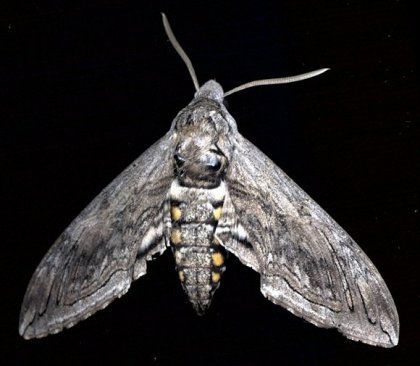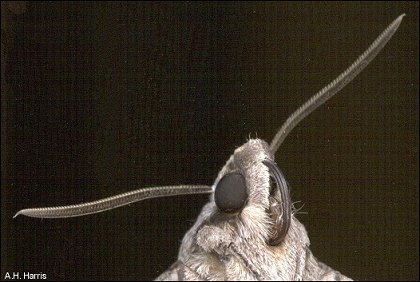
Most of us enjoy a beautiful flower, but why do some seem to cheat us by only blooming at night? Perhaps it's because these plants aren't really trying to attract us. They're trying to attract an accomplice to help them reproduce. Some plants are pollinated by the wind. Others use insects, birds, and even bats! And you'd be surprised how much we can learn about these pollinators just by looking at the flowers! Flowers pollinated by birds are often red—a color insects can't even see!
Tiny, inconspicuous flowers are usually wind pollinated—they don't have to attract attention. Many of our night-bloomers are pollinated by moths, which are most active after dark. The sphinx moth flies fast and can even hover over a flower like a hummingbird as it collects nectar—and pollen! Their long tongues help them reach deep into the flower to get their bribe for helping the plants reproduce. Next time you admire a flower, see if you can figure out what might be the perfect pollinator!

Listen to the Audio (mp3 format) as recorded by KTEP, Public Radio for the Southwest.
Contributor: Kodi R. Jeffery, Centennial Museum, University of Texas at El Paso.
Desert Diary is a joint production of the Centennial Museum and KTEP National Public Radio at the University of Texas at El Paso.

Sphinx Moth. The coloration and marking allow this moth to blend into the background during its resting period. El Paso, El Paso Co., TX. 19 May 2001. Scanned image by A.H. Harris.

View of Sphinx Moth showing the coiled tongue on the underside of the head—uncoiled, the tongue can reach deep into flowers. Scanned image by A.H. Harris.
Borror, D. J., and R. E. White. 1970. A field guide to insects, America north of Mexico. Houghton Mifflin Co., Boston, 404 pp.
Bugbios. Beautiful photograph and some information.
DesertUSA on the White-lined Sphinx Moth.